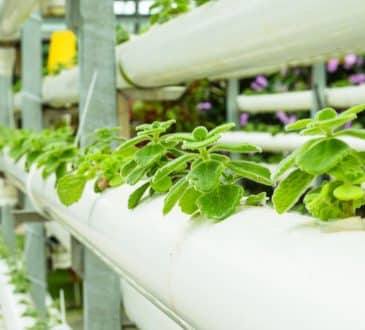Your Commute Is Killing the Planet and Remote Work Can Help

The world has shifted in remarkable ways, and flexible work is an undeniable force reshaping professional life. Yet do remote and hybrid arrangements help the environment or lead to unintended consequences? A new study by Prof. Mark Ma at the University of Pittsburgh, Betty Xing at Baylor University and Ling Zhang at Rowan University merges commuting data with satellite-measured greenhouse gas emissions, offering clear insights into how workplace flexibility shapes entire metropolitan areas.
Before the pandemic, daily commutes defined modern routines. The report notes that 119 million people drove to work in 2019, each emitting around 25.6 pounds of CO2 per day. Over 250 workdays, this amounts to 762 billion pounds of CO2 tied directly to commutes. Those numbers underscore how conventional office schedules weigh on our planet.
When COVID-19 struck, remote work surged. According to a Harvard Business Review article, global emission dropped by 17% in April 2020 compared to the peak 2019 level. Such a decline highlighted the immediate impact of fewer cars on the road. Yet some observers worried that at-home energy use or extra personal errands might erode the advantages of reduced commuting.
Still, the report demonstrates how COVID-19 permanently changed our view of work. 31% of businesses used more telework in mid-2021, while 35% of the workforce turned remote at the pandemic’s peak. Even after offices reopened, 91% of employees prefer the flexibility of working from home to continue. That level of acceptance reveals how quickly people embraced remote arrangements.
However, staying home does not automatically yield greener outcomes. Some individuals run more errands or embark on “workcations.” The question is whether these new habits cancel out the gains of fewer commutes. The data suggest that any extra driving typically does not outweigh the overall drop in traffic-related emissions, so remote work remains a net positive.
Unlike earlier estimates, the researchers at the University of Pittsburgh rely on satellite data to track CO2 and NO2 concentrations across major metros. NASA’s Orbiting Carbon Observatory-2 (OCO-2) and the European Space Agency’s TROPOMI instrument capture real-time emissions, giving a sharper picture of citywide activity. The results show a smaller increase in greenhouse gases in the most flexible metros than in the least flexible ones. The impact on NO2, described as more sensitive to traffic, is particularly striking.
Some metros, such as Austin, still report rising emissions, partly due to rapid economic expansion. Overall, though, flexible regions fare better, with smaller post-2020 pollution spikes than their less flexible counterparts. The research also confirms that while NO2 fell broadly in 2020, it rebounded faster in areas lacking remote policies. Satellite images in the report vividly illustrate these contrasts, revealing lower concentrations in many flexible downtowns.
Such patterns matter to companies seeking both profitability and sustainability. Real GDP growth in the top 10 most flexible metros was twice that of the least flexible ones in 2022, indicating that strong economic performance can coincide with lower emissions. This finding challenges the notion that environmental care must undermine financial outcomes. Instead, hybrid or fully remote models appear to foster productivity while limiting pollution.
Growing emphasis on Environmental, Social, and Governance (ESG) goals pushes firms to explore how remote and hybrid work can shrink their carbon footprints. By reducing cars on busy roads, air quality improves in ways visible from space. This dynamic gives leaders a rare chance to align business objectives with environmental imperatives, providing genuine societal gains alongside cost and efficiency benefits.
Still, the manner of implementing flexible work matters. Hybrid schedules eliminate some commutes, while fully remote setups cut them more substantially. Non-work travel and home energy choices influence the final result. Even so, widespread adoption tends to reduce total emissions, especially in dense urban corridors.
Return to office mandates by organizations ranging from Amazon to the US federal government and some state governments have sparked controversy, and these findings shed light on what might be lost. With fewer commutes, city centers experience less congestion, resulting in cleaner air and more personal time for workers. Leaders dedicated to carbon reduction might hesitate to reinstate daily office attendance, given the documented environmental advantages of flexibility. Evidence from satellites and economic growth statistics implies that balanced policies sustain both progress and productivity.
Because satellites measure CO2 and NO2 so precisely, they leave little doubt about the effects of cutting daily drives. The remote revolution, first seen as a crisis workaround, now appears ingrained in many corporate cultures. As leaders fine-tune flexible programs, the environmental benefits should remain visible—provided they address any rebound effects like excessive personal trips or at-home inefficiencies.
By trimming the number of cars on the road, flexible work reshapes urban life. According to the report, such changes don’t just reduce greenhouse gases; they spur economic growth in metros that embrace remote work. This outcome counters assumptions that sustainability hampers prosperity. Instead, it shows that forward-thinking leaders can enact policies beneficial both to the bottom line and to the planet.
For cities seeking to lower emissions while staying competitive, flexible work emerges as a viable strategy. It improves local air quality, supports economic dynamism, and aligns with a workforce increasingly fond of remote arrangements. Some critics worry about half-empty offices, but the data prove that skipping commutes can deliver real environmental and productivity gains. Over multiple years of satellite measurements, the most flexible metros consistently outperformed the less flexible ones, providing a practical path for modern urban life. In a world demanding progress on climate change, flexible work offers a realistic and data-backed avenue toward a healthier planet and thriving communities.
Have you read?
The World’s Best Medical Schools.
The World’s Best Universities.
The World’s Best International High Schools.
The World’s Best Business Schools.
The World’s Best Fashion Schools.
The World’s Best Hospitality And Hotel Management Schools.
Bring the best of the CEOWORLD magazine's global journalism to audiences in the United States and around the world. - Add CEOWORLD magazine to your Google News feed.
Follow CEOWORLD magazine headlines on: Google News, LinkedIn, Twitter, and Facebook.
Copyright 2025 The CEOWORLD magazine. All rights reserved. This material (and any extract from it) must not be copied, redistributed or placed on any website, without CEOWORLD magazine' prior written consent. For media queries, please contact: info@ceoworld.biz








